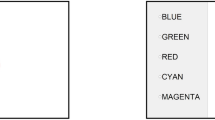Abstract
When the microvascular blood perfusion in human skin is measured by photoplethysmography (PPG), infra-red light (800–960 nm) is normally used as the light source. The PPG signal, which consists of a pulsatile (AC) and a slowly fluctuating (DC) component, was studied at different optical wavelengths utilising optical fibres for guiding the light to and from the skin surface. Finger and forearm skin was examined and high and low skin blood perfusion was brought about by local water-induced temperature provocation. The analysis of the measurement results provided evidence that the use of shorter wavelengths in PPG (AC) for monitoring skin perfusion changes could be applicable. The use of different optical wavelengths also raises the possibility of recording perfusing changes at different depths in the superficial tissue. The sweat water content in stratum corneum of human skin will probably determine the total amount of reflected and backscattered radiation reaching the photodetector. This is important when the skin perfusion is changed by alterations in the environmental temperature conditions activating the sweat glands in tissue. Temperature-dependent optical characteristics of blood-free skin tissue may explain the limited ability of the DC component of PPG to monitor skin perfusion changes.
Similar content being viewed by others
References
Anderson, R. R. andParish, J. A. (1981) The optics of human skin.J. Invest. Dermatol.,77, 13–19.
Challoner, A. V. J. (1979) Photoelectric plethysmography for estimating cutaneous blood flow. InNon-invasive physiological measurements: 1.Rolfe, P. (Ed.), Academic Press, London, 125–151.
Davis, D. L. andBaker, C. H. (1969) Comparison of changes in blood volume and opacity in dog digital pad and tongue.J. Appl. Physiol.,27, 613–618.
Giltvedt, J., Sira, A. andHelme, P. (1984) Pulsed multifrequency photoplethysmograph.Med. & Biol. Eng. & Comput.,22, 212–215.
Hertzman, A. B. (1938) The blood supply of various skin areas as estimated by the photoelectric plethysmograph.Am. J. Physiol.,124, 328–340.
Hlastala, M. P., Woodson, R. D. andWranne, B. (1977) Influence of temperature on hemoglobin-ligand interaction in whole blood.J. Appl. Physiol.,43, 545–550.
Kim, J.-M., Arakawa, K., Benson, K. T. andFox, D. K. (1986) Pulse oximetry and circulatory kinetics associated with pulse volume amplitude measured by photoelectric plethysmography.J. Anesth. Analg.,65, 1333–1339.
Lindberg, L.-G., Tamura, T. andÖberg, P. Å. (1991) Photoplethysmography Part 1 Comparison with laser Doppler flowmetry.Med. & Biol. Eng. & Comput.,29, 40–47.
Mook, G. A., van Assendelft, O. W. andZijlstra, W. G. (1969) Wavelength dependency of the spectrophotometric determination of blood oxygen saturation.Clin. Chim. Acta,26, 170–173.
Pittman, R. N. (1986)In vivo photometric analysis of hemoglobin.Ann. Biomed. Eng.,14, 119–137.
Steinmetz, M. A. andAdams, T. (1981) Epidermal water and electrolyte content and the thermal, electrical and mechanical properties of skin. InBioengineering and the skin Marks, R. andPayne, P. A. (Ed.), MTP Press Ltd., Lancaster, 197–213.
Svanes, K. (1980) Effects of temperature on blood flow. InMicrocirculation: 3.Kaley, G. andAltura, B. M. (Eds.), University Park Press, 21–42.
Takatani, S. andGraham, M. D. (1979) Theoretical analysis of diffuse reflectance from a two-layer tissue model.IEEE Trans.,BME-26, 656–664.
Weinman, J. (1967) Photoplethysmography. InA manual of psychophysiological methods.Venables, P. H. andMartin, I. (Eds.), North Holland Publishing Co., Amsterdam, 185–217.
Yoshiya, I. andShimada, Y. (1983) Non-invasive spectrophotometric estimation of arterial oxygen saturation. InNon-invasive physiological measurements: 2.Rolfe, P. (Ed.), Academic Press, London, 251–286.
Author information
Authors and Affiliations
Rights and permissions
About this article
Cite this article
Lindberg, L.G., Öberg, P.Å. Photoplethysmography. Med. Biol. Eng. Comput. 29, 48–54 (1991). https://doi.org/10.1007/BF02446295
Received:
Accepted:
Issue Date:
DOI: https://doi.org/10.1007/BF02446295




